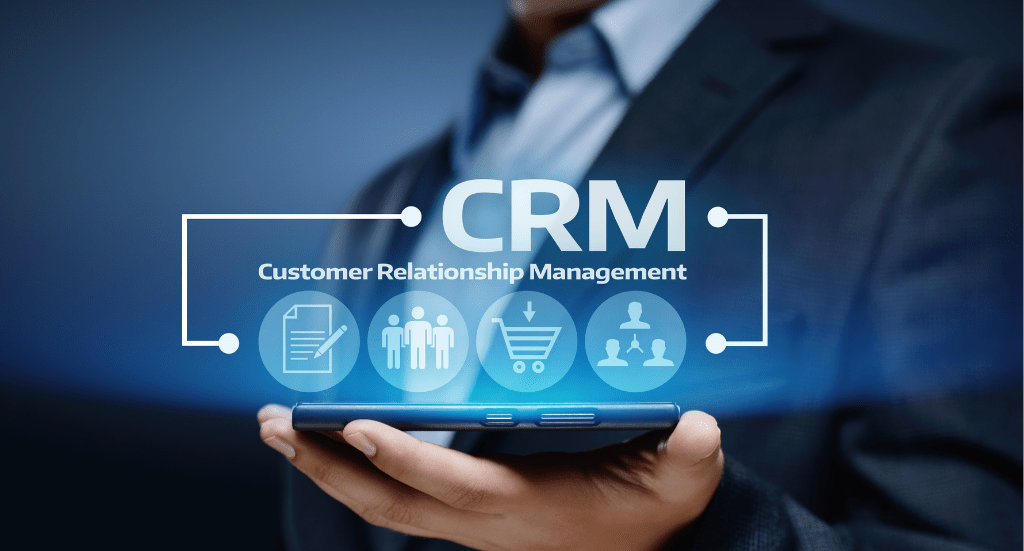Get your e-commerce off the ground in 10 steps

Since I founded the Insight Agency in 2006, I have met many entrepreneurs who have asked me to design and create an e-commerce. Up until ten years ago, having an ecommerce was a possibility, an option, five years ago it was already an opportunity, but after the advent of the pandemic and the Covid-19 emergency, having an ecommerce has become essential.
For this reason, I thought I'd write this article, analyzing all those elements to take into consideration when deciding to create an e-commerce site.
What is Ecommerce?
The term Ecommerce, literally from the English "electronic commerce", indicates all online transactions of goods and services, between producer and consumer.
In the past, the term was used to define the electronic exchange of commercial documents, such as invoices or purchase orders.
To date, the terms Ecommerce, E-Commerce, E Commerce, can be used to define all transactions on the web, which involve the purchase of goods and/or services.
Is it enough to create an ecommerce to sell online?
It would seem a provocative question, but it is not. To sell online it is not enough to create an e-commerce.
It's just one of the steps you need to take to be able to sell online. Probably the actual creation of the electronic shop is one of the last pieces to be assembled.
The most important aspect is the strategy we want to adopt to correctly position our shop on the web. I always say, to those who ask me for information on how to open an ecommerce, that you should never think that opening a site is enough to start selling and making money. The web is full of shops selling all kinds of products or services, you'll be spoiled for choice.
Are you wondering where to start? What is the most important aspect to consider in planning the strategy and our e-commerce?
Don't worry, I'll explain everything to you. A step at a time.
With my e-Commerce can I sell to everyone?
In theory yes. In practice not. It is one of the most common mistakes to think you can sell to anyone anywhere in the world.
It is above all a question of the budget to be assigned to your marketing. Thinking of advertising on such a vast target, unless you are a large multinational, such as Coca Cola or McDonald's, is almost impossible.
As already mentioned, as also happens in physical reality, where there are many shops offering their goods, so also on the web there are millions of e-commerce sites offering millions of products. So, to be found and chosen, you need a marketing strategy and advertising. As in physical reality, the more we broaden the target, the greater the economic resources needed to be effective.
Let's take an example to make it clearer. Printed 10,000 flyers. Now if you set out to advertise your business only in your neighborhood, you'll probably be able to blanket it, and you'll be able to do it over and over again. By the end of the flyer, everyone in the neighborhood will know your business from having had your flyer in their hands. However, if you already extend the range of action of advertising to the whole city, you probably won't be able to cover all the streets already, you certainly won't be able to do it several times... In short, to be effective, you need more flyers, more people distribute them, the more budgets… and the more the range extends, the more resources they will need. It's the same on the web.
This is also the reason why those portals for comparing prices and offers, such as trivago.it, facile.it, Trovaprezzi.it, etc., are becoming more and more popular. Amazon itself, and they know e-commerce, allows you to compare prices between different suppliers...
Don't be discouraged, what is needed is to have a strategy.
In 10 steps the strategy to sell with your own e-commerce
What we will now see together is a path that develops in ten sequential stages. This means that if you haven't unmarked the first stitch, you don't need to go to the second and so on. For it to be effective, the process must be done step by step, respecting the sequence.

1. Make a Business Plan
It is essential to create a Business Plan that foresees the growth of e-commerce in the medium/long term 6/12/24 months. Taking into consideration both the development costs and those of Marketing and Communication.
Let's start with the main cost items that you must include in the Business Plan, to launch your ecommerce on the market.
- Implementation and development of strategies: Marketing, Communication, Positioning, Analysis of Competitors etc…
- Creation and development of the Brand Identity : naming, a logo, corporate colors, coordinated image, etc...
- Logistics organization and structuring
- Structuring the online purchasing process
- Definition of the payment system : Bank transfer, Credit cards etc.
- Customer Care organization
- Creation of real e-commerce
- Creation of Advertising campaigns on the main social networks: Facebook, Instagram, Google ADS, YouTube etc, to launch your online store on the Market
- Implementation of an Email Marketing strategy and, if possible, of Marketing Automation , to increase the loyalty of customers and potential customers
- Creation and delivery of DEM (Direct Email Marketing) to reach a large potential audience
- Implementation of a Content Marketing Strategy , to increase SEO positioning and offer valuable content to users
- Design and implementation of a Social Media Strategy
- Implementation of Press Office activities
What I have reported are the main cost items.
As you can see, there are a lot of them. And the creation of the e-commerce site is just one of them.
It goes without saying that this scheme is the same even if you want to create the Business Plan for opening a physical store.
1.1 The Business Plan will evolve over time
You will be forced to update the cost items over and over again, based on the information and analyzes you will carry out and which we will address in the following points.
For example, the analysis of the Competitors, the Market and the creation of the Buyer Personas are essential for deciding:
- Who to sell to
- How to sell
- At what price to sell
The analysis of the ADV Campaigns and the SEO positioning of the Competitors will lead you to increase the Budget established at the beginning.
If your competitors have a large budget for ADV campaigns, you will need to adjust your budget.
If they have created an SEO strategy that places them in the first results on search engines, you will need to increase your SEO strategy.
1.2 Launching an ecommerce means creating a new company that sells over the internet
If they told you that selling online is enough:“How much does it cost to launch your e-commerce on the Market?”
- Create an Instagram profile, or a Facebook page: I can tell you that it's not true. Or rather, success stories can be counted on the fingers of one hand;
- Register a domain and create an e-commerce: it's not true. As we said there are millions of online stores. Why should Google show yours to users?
- Running an ADV campaign to reach the potential target: that's not entirely true. Again, unfortunately, there is a but. If you haven't defined:
- Who do you want to sell to (Buyer Personas)
- How to sell (Logistics)
- Customer care (how to help customers)
- What content to offer (User Experience)
ADV campaigns will probably generate many visits to your new online business, but you will have few conversions. That is, few sales.
All this makes us understand that launching an e-commerce is like creating a new company. You can't improvise.
For this reason, a Business Plan is essential to launch our online store, and it needs to be structured taking into consideration medium/long-term development. 6/12/24 months.
Now that we have structured our Business Plan, we are ready to proceed with the next steps.
2. Analyze what the market requires

Are the products and services that you provide, or that you have decided to sell with your new ecommerce, in demand by the Market?
To ensure the right profit margins, it is essential, first of all, to verify that what we want to sell is interesting for our potential customers.
Basically, that there is a potential market.
There are several tools to perform this analysis, both free and paid.
For example:
- With the Google ADS Keyword Planner tool, you can analyze online searches made by users.
- With Google Trends it is possible to analyze topics of interest to users.
- With Semrush it is possible to search for keywords, discover the traffic generated, and which competitors are using them.
The analyzes can be simple if, with our e-commerce, we want to sell a type of product or service already on the market.
Research and analysis are much more complicated when we want to launch a new product or service on the market.
On the one hand, launching a new product is a strength. Because we have the opportunity to create a new market niche by being the first to enter the consumer's mind.
That is, we have the opportunity to become the Leaders right away.
On the other hand, we must include an intense dissemination activity in our Marketing and Communication Strategies.
Every purchase we make corresponds to a specific need.
The consumer does not yet know our product, and does not know what need or problem it can solve.
We must therefore awaken this new need in the potential customer, we must explain to him why he needs it and what problem it solves for him.
3. Analyze your Competitors: SEO and Social Positioning
To win on the market, it is essential to know your competitors.
- What is their business model?
- How do they sell the products?
- What kind of margins can they get?
- How is their logistics organised?
- What are their strengths and weaknesses?
- How are they positioned online on the web and on social channels?
- What SEO strategy did they adopt?
- Do they carry out Advertising Campaigns?
- Do they have customer care? How does it work? What kind of assistance does it provide?
- What is the feedback from customers and users?
- Are the reviews and comments positive or not?
These are just some of the questions we need to ask ourselves when we carry out the analysis of our Competitors.
Having analyzed the competitors, we are able to define how to structure our business model.
4. Plan the logistics of your E-Commerce

Logistics is a fundamental point for the realization of an effective E-Commerce strategy. I'll explain why.
Amazon doesn't win because it's the largest e-commerce in the world, but because it has the best logistics.
If you have “ Prime “, a good part of the products is delivered for free in one day.
This is Amazon's great strength. For this reason, every year, Amazon generates billions of euros in profits, only in Europe.
And for this reason, every year, more and more companies build their own online shop on Amazon.
4.1 Can all companies sell on Amazon?
I would say no.
For each sale, Amazon retains a fee that varies from 7 to 15% of the value of the product (based on the product category) to which shipping costs must be added.
Not only. On Amazon, we probably also find many of our competitors, and we may be forced to apply very competitive pricing policies.
We can say that, from a certain point of view, being present on Amazon can help to increase sales. However, it is necessary to carry out a precise analysis of the margins, in order not to run into hasty decisions, which can also translate into insufficient margins.
That said, before structuring our E-commerce, it is essential to predict from the outset how our goods will be shipped.
This will allow us to define:
- Which courier to use
- What are the shipping costs
- What type of packaging should we use
- How many days do we deliver the goods
- How to manage the rotation of products in the warehouse
Logistics analysis is also essential to determine the selling price of the product. Or at least, the margin we get from each sale.
Each data must be compared with the data acquired from the analysis of the Competitors, to understand how we can position our online store and implement the right E-Commerce Strategy.
5. Check the strengths and weaknesses of your products and services, compared to those of the competition
Competitor analysis allows us to have precise parameters of comparison with our goods and services.
It is therefore essential to carry out a SWOT Analysis .
SWOT analysis (also known as SWOT matrix), is a strategic planning tool of a project or company, used to evaluate:
- Strengths
- Weaknesses
- The opportunities ( Opportunities )
- Threats
Our product or service could be more expensive than that of our competitors, but with superior performance. Or supported by excellent customer care.
The price factor is not always decisive .
Would you buy a new computer, saving even 20%, knowing that assistance is difficult to contact in case of problems?
Would you go to a restaurant where the prices are great, but the waiters are all rude?
Would you buy a software, or an online service, where customer care is exclusively in English?
Would you enroll in a low cost gym, always crowded, where you have to wait 10 minutes each time to use a piece of equipment, and the cleaning leaves something to be desired?
6. Create your Buyer Personas > Decide who you want to sell to

Can we sell everything to everyone? The answer is very simple: No
There is no brand in the world that has the entire market, unless it has created its own market niche.
Not even Coca-cola, one of the best-known brands globally, holds 100% of the market shares.
It is therefore crucial to decide who we want to sell to .
This process is called Buyer Persona Creation.
It is a recurring theme in my articles, not because it is fixed, but simply because it is one of the fundamental factors that make Marketing and Communication Strategies successful.
The creation of the Buyer Personas is also based on the analysis of the competition.
The watchword is to differentiate.
I have analyzed what the market is asking for, I have analyzed the positioning of my competitors. Now I decide who to sell my products to.
Deciding who to sell your products to is a fundamental step.
It allows us to:
- Correctly position our site and commerce on the market
- Setting the price of our goods and services
- Design the communication style
- Define the type of after-sales support to be implemented
- Deciding which keywords, keywords, to use in our SEO Strategy, to position the ecommerce on search engines
- Choose which social network to use to reach the target audience
7. If you can, create a new market niche
As I said before, the greatest goal is being able to create a new market niche.
Given the infinite range of goods and services that we find on the web, it seems like an impossible strategy, but it isn't, indeed it is highly feasible.
You understand what customers are looking for. You know how your competitors are positioned, what they sell and how.
You have the option to define one or more elements that allow you to differentiate yourself from your competitors and appear unique in the eyes of your potential customers.
It is essential to succeed.
8. Create the best user experience
If we want to open an e-Commerce, we start from two basic elements:
- The power is in the hands of the users
- The price is not always the factor that determines the sale
The Internet has completely changed the online buying and selling process.
Before the advent of the web, the company with the largest spending budget won.
Thanks to mass media, TV, Radio and newspapers, the entrepreneur had the opportunity to reach the entire potential audience.
By adopting a cross-channel strategy, he had the opportunity to convince people to buy his product or service.
The consumer was basically passive. Not because it was limited. He simply didn't have the tools to analyze, verify and compare what the Company said.
Today the user, before buying a product, has the possibility to read the technical description, the reviews, watch the demonstration tutorials, etc.
He has all the information he needs to really understand what he's buying.
He is no longer passive, but the power is in his hands.
Now the second point comes into play: the price is not always the factor that determines the sale .
And it is the most important element of your Strategy.
If you want to sell, you have to create an absolutely positive User Experience.
Otherwise, if you base your entire strategy solely on price, there will always be someone willing to give you a bigger discount.
It is therefore essential:
- Make descriptions of our products and services clear, complete and exhaustive
- Integrate technical explanations, video tutorials, user manuals, demonstration videos
- Provide a FAQ section (frequently asked questions), where users find answers to all their questions
- Integrate an always active customer support. Customer care can respond both via Chat and by phone, the important thing is that they are easily reachable and punctual in their replies
- Plan a strategy on the main social networks, to intercept potentially interested users and provide the greatest number of useful information
If you want to significantly increase the User Experience of users, converting them into customers, it is also essential to integrate a Marketing Automation Strategy.
Based on the information requested by the user, thanks to automation, additional information is sent that responds precisely to the real needs of the user:
The right message, at the right time, to the right person.
This is the cornerstone of the Inbound Marketing philosophy.

9. Implement a CRM (Customer Relationship Manager)
That is, a software that allows you to save, catalog and manage all the information between the Company and the user.
The greater the potential offered by the CRM, the greater the opportunities to transform a user into a customer.
One of the best on the market is HubSpot. Thanks to a CRM, such as HubSpot for example, you can acquire and catalog a lot of information relating to your users.As?
Suffice it to say that HubSpot integrates with all major communication channels of a company:
- Website
- Information request form
- Newsletter subscription form
- Live Chat and Chatbots present on the site
- Ecommerce module
- Live Chat and Facebook Messenger Chatbots
Not only.
If, for example, a user fills out a form on your ecommerce site, or signs up for your newsletter, HubSpot keeps track of every page and product that the user visits on your online store.
Thanks to this feature, it is possible to accurately profile the user, and understand what he is really interested in.
Thanks to Marketing Automation (for this HubSpot represents one of the most powerful solutions in the world), we can send the right information based on the specific needs of users.

10. Define which channels and strategies to use to make your ecommerce known and reach your potential target
Unfortunately, as we have already seen, it is not enough to publish your e-commerce to reach our potential customers.
It is essential to plan a Marketing and Communication strategy that takes into account the various factors (Target, Market, Product/Service, etc.), to define which channels to use.
Let's try to find out, together, which channels we can use.
10.1 Social Channels
Let's start with the first recurring question: do I have to be present on all social channels? The answer is no.
It depends on two factors: Reference target and Budget .
Facebook, Instagram TikTok, LinkedIn etc. Each of these social networks has very specific targets, and responds to very specific user needs.
The right social channel to use depends on the goods and services we offer and the Buyer Personas we want to reach.
10.2 AD campaigns
Advertising campaigns can be carried out through many channels and in different ways.
As with the Social strategy, it depends on the products/services we provide, the reference market and the target we want to reach.
10.2.1 PPC campaigns with Google ADS
Google ADS is definitely one of the most effective tools to use.
ADS Search Campaigns essentially intercept users who are doing a specific search on Google. Our advertisement will appear based on the keywords used by users. This tool is extremely effective as it intercepts a specific need.
10.2.2 PPC campaigns with Facebook and Instagram ADS
As with Google ADS, PPC (Pay per click) campaigns with Facebook and Instagram ADS provide for payment upon user click.
Unlike Google, the announcement appears in the social feed, and is not linked to the user's search. They are essentially Display Campaigns (they can also be created with Google ADS), and they intercept the user who sees the advertisement.
They certainly generate high traffic to the site but, compared to Google ADS Search campaigns, they have an average much lower conversion rate.
It is also important to note that a campaign on Facebook and Instagram has a much lower click cost than those of Google ADS.
10.2.3 PPC campaigns with Linkedin
If your Target is purely B2B, Linkedin may be the correct channel as profiling is very high.
It is possible to select the recipient of our Campaign based on multiple factors, some of which are extremely strategic such as, for example, the role they cover in the Company.
10.2.4 DEM campaigns
The term DEM stands for Direct Email Marketing . It consists in sending a commercial communication to a large database of users.
DEM Campaigns are created by specialized companies, which own the Database.
Small tip. Don't be fooled by the numbers.
Before carrying out a DEM campaign of up to 1,000,000 contacts, always request a sample test on 100,000 contacts.
To decide whether to use a DEM or not, it is important to consider the average conversion coefficients, in relation to the margins of the product or service we want to sell.
Let me give an example, expressing some average market costs.
Shipping a test DEM to 100,000 users costs, on average, 1,000 euros.
The shipment of a massive DEM to 1,000,000 users costs, on average, 4,000 euros.
It's easy, however, to get caught up in enthusiasm.
And it is important to take into account two values:
- opening rate: on average 10%
- conversion rate: on average 10%
Let's see them transformed into numbers.
A DEM sent to 100,000 users is opened by 10% of recipients = 10,000 openings. The users who click the link in the DEM are a further 10%, therefore 1,000.
Basically I sent 100,000 communications to acquire 1,000 visitors to my e-commerce.
At this point it is necessary to apply the conversion rate in customers which, on average, we can estimate at 2/3% based on the type of product/service, the market, the promotion in progress, etc…
There are many factors to take into consideration. That is, we must not evaluate the purchase alone.
Generally it is advisable to prepare an Excel that includes:
- Repurchase % (users who buy more than once)
- The conversion rate in the medium term, if a user has subscribed to the newsletter
- The generation of new customers or potential customers, if we have established coupon or affiliate programs
After you have entered and analyzed all this data in your Excel, you are able to decide whether to continue with the shipment of the massive DEM, or not.
10.2.5 ADV campaigns: conversion rate
If the Campaign is structured correctly and consistently, we can generate a high conversion rate. By consistent I mean that the whole path: Keywords > Ads > Landing Page, are developed in a consistent way.
I'll explain.
Campaigns are often created using ads that promise discounts and promotions. Then, when the user clicks on the advertisement, he arrives at a page where he does not find what was promised in the advertisement itself.
Or what he finds is not what he was looking for.
Let's see a practical example.
Try typing the search keywords “unfurnished apartment rental in Naples” on Google.
A series of announcements from real estate agencies and portals will appear that "apparently" respond to your search.
Click on an ad, and you will arrive at a list of results offering dozens of apartments, for summer holidays, or furnished or, again, for sale. To find an "unfurnished rental apartment", you will be forced to read dozens of ads.
This is a practice that "makes the user nervous", who decides to leave the page immediately. The conversion rate will therefore be very low.
10.3 SEO and Content Marketing Strategies
I have deliberately combined these two strategies, because they are closely related.
The SEO strategy depends on the quantity and quality of the contents we publish on our E-commerce.
The effectiveness of the Content Marketing strategy depends on the SEO strategy we have designed to launch our ecommerce:
- SEO analysis of competitors
- Analysis of keywords used by users
- Creation of the Tree of Keywords to be used for editing the contents
It is important to underline that the SEO strategy must not be implemented only for the contents of the blog, but also and above all, for the positioning and indexing of the products on the search engine.
10.3.1 Link Building Strategies
Link Building strategies consist of placing articles and content on third-party sites, portals and blogs that talk about our company, our products and services.
Necessarily, the article must contain a link to our E-commerce.
It is essential that the sites, blogs and portals that we have selected have an excellent online positioning and an excellent Domain Authority.
The advantages deriving from the Link Building strategy are mainly 2:
- We can increase visits to our ecommerce.
Users who read the article, if curious, click on the link contained therein, and thus arrive at our online store. - They increase the SEO positioning of our site.
We can simplify this concept by saying that: If many people talk about me, it means that I am important.
So, if we convert the conversation online, if so many successful magazines talk about me, it means that I'm competent.
This transfer of popularity takes place via the link contained in the article.
NB If you want to adopt this strategy, check the link inserted in the article. If it has the "NoFollow" attribute, it's a useless link, because this attribute tells search engines not to follow the link.
10.4 Traditional Media Advertising
If you want to launch your online store, it doesn't mean that you only have to include digital marketing strategies.
Activating strategies such as television, radio or press campaigns depends on 3 factors:
- Budget we have available
- Type of Product or Service that we want to sell through our e-commerce
- Market and Reference Target
If your product is aimed at the masses and you want to reach a vast (national) market, you probably need to include a budget for traditional media promotion in your marketing strategy.
When you subscribe to the blog, we will send you an e-mail when there are new updates on the site so you wouldn't miss them.
By accepting you will be accessing a service provided by a third-party external to https://www.insightadv.it/


































































Comments